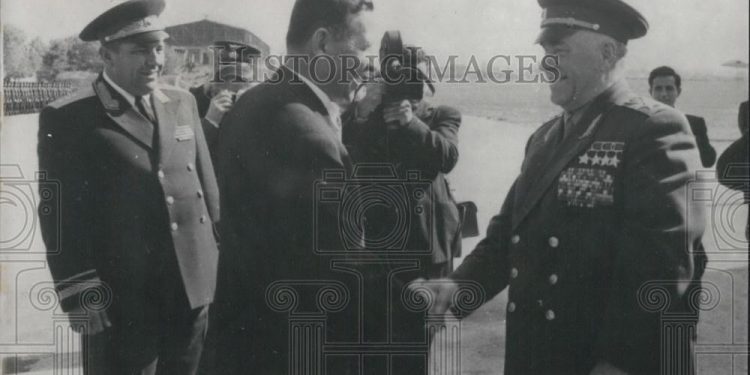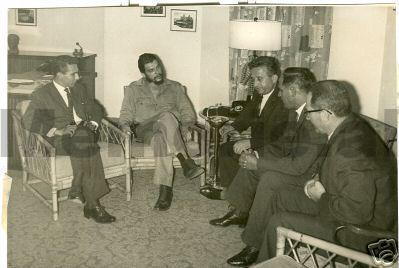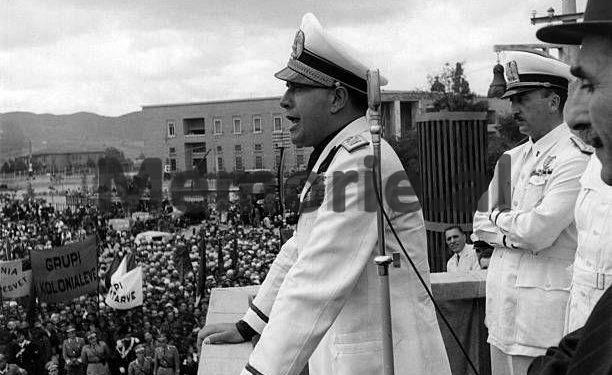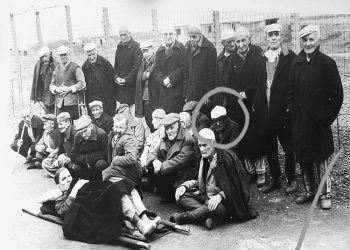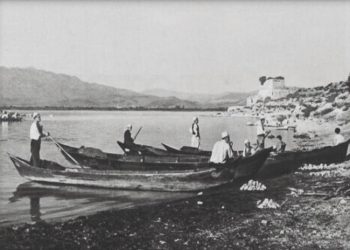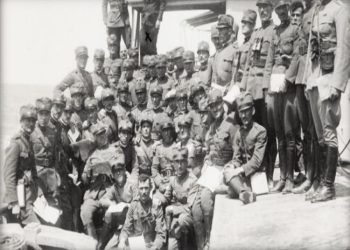Dashnor Kaloçi
Memorie.al A piece of Albanian history obsessed with celluloid, where some of the most prominent personalities in world politics visited the land of eagles ?! By Dino Grannd, Italy’s Foreign Minister who visited Tirana at the beginnings of the Zogu Monarchy, to Galeazzo Ciano, Benito Mussolini, Victor Emmanuel, Stanoje Simic, Marshall Zhukov, Khrushchev, Che Gevara, Che En Lai, Prince Sihanouk, Bavarian chancellor Strauss, Karolos Papoulias, Mother Teresa, Perez De Kuelar, Gensher, and up to US Secretary of State James Baker… ?!
Rare images of 16 personalities who visited Albania from 1930 to 1991
The first visit to Tirana by German Chancellor Angela Merkel a few years ago, among others, to the encyclopedic calendar, marked another high-profile world politics figure who trampled on the land of eagles. In these 107 years of the Albanian state, our country has been visited by some of the most prominent politicians and personalities in world politics, and most notably after the 1990s, when the communist regime fell and with it the iron curtain that separated this country from the European fraternities. From that time until today, for over a quarter of a century, many well-known names in world politics and heads of state have visited our country; Pope John Paul II, Tony Blair, Medellin Allbrigt, Colin Powell, Demirel, George W Bush, Silvio Berlusconi, Hillary Clinton, Pope Francis, Erdogan, Vuçic, etc. concluding at Chancellor Angela Merkel. But these are not the only politicians and personalities who have come to our country as friends, since from 1930 to 1991, the eagles have been visited by 16 world-class personalities, even the most prominent names. We are publishing all of these below in this post along with the related photos.
Dino Grandi
The photo shows former Italian Foreign Minister Dino Grandi, one of the closest people to the Italian fascist dictator Benito Mussolini, King of Albania Ahmet Zogu, and former Albanian Prime Minister Koco Kota during the monarchy. The head of the Italian diplomacy, Dino Grandi, would pay a five-day visit to Albania on April 5-10, 1930, to submit the continuing demands on the part of official Rome for Albania to come under the political, economic “Protectorate”. , and the military of Italy. And this was after Ahmet Zogu rejected a political and economic orientation of official Tirana to his former “ally”, Yugoslavia. This visit would further strengthen the comprehensive relations between Albania and Italy as the famous Political-Economic Cooperation Pacts of Tirana had just been signed about 4 years ago. But Grandi’s visit would also serve as a warning signal to the Albanian Monarchy in general and to Ahmet Zog himself in particular to show clearly the course of Albania’s ongoing political orientation on the side of fascist Italy. But in fact time and circumstances showed that the break from friendship with the Balkan monarchies and such orientation of Albania towards Italy brought only a period of significant economic, cultural, and social progress and development under the “occidental Italian style” But ironically 9 years later, and precisely in April, would also correspond to the final occupation of Albania by the very state that Grand represented.
Galeazzo Ciano
Soon the post of Italian diplomat chief would be taken over by Count Ms. Gotti Caleo’s favorite “son-in-law” of the Mussolini family. Count Ciano would visit Albania three times on exactly three significant dates in Albanian history. On April 27, 1938 (the wedding day of the royal couple Zog-Appony), on April 8, 1939 (the day after the Italian invasion was over), and on October 28, 1940 (the day the Italian-Greek war began). The picture in question represents exactly his second visit, on April 8, 1939, Count Ciano, together with Shefqet Verlaci (who would receive the post of head of government from the Italians 5 days later), greet the people of Tirana from the balcony of the City Hall on the occasion. the end of the fascist occupation of Albania by the Italian army. Galeazzo Ciano himself would for a time become a kind of “governor” for the already occupied Albania as it would play a major role in consolidating the fascist regime in Albania until September 1943 when the Italian troops would finally withdraw from Albania, and Ciano himself would fall victim to a plot drawn up by his brother-in-law Benito Mussolini, which would take him to the firing squad on a January 1944 day in Verona.
Benito Mussolini
The start of the Italian-Greek war would put the Italian army in a very difficult position, which until then had known no victory in its campaigns in the Mediterranean and Africa. To closely observe the weakness and inferiority in the Italian army’s fighting in Albania, as well as to raise the morale of the fascists as a counterbalance to Greek triumph, the supreme leader of Italian fascism, Benito Mussolini, would come to Albania. The couple would stay in Albania for 20 days; from March 2 to March 22, 1941, and would spend a good deal of time on the Italian-Greek war front line, under the company of senior Italian hierarchs and servicemen in Albania. The photo shows Benito Mussolini along with the Commander-in-Chief of the Italian forces in Albania, General Ugo Cavallero, as well as a number of senior fascist army exponents on the Greek front. During this military inspection Mussolini and Cavallero are on the slopes of Tomorri Mountain in Skrapar, where the demarcation line of the Italian-Greek front was also located. But even with Mussolini’s visit to Albania, the loss of the Italian army in the face of the modest Greek one was inevitable. Italy’s honor would only come into place with the introduction of German troops alongside it in the Occupation of Greece and the withdrawal of Greek troops from southern Albania.
Victor Emanuel III
The visit of fascist Italy’s most important man to Albania, the Italian dictator Benito Mussolini in March 1941, would be followed by another equally important visit of the most powerful man in Italy, at least in the hierarchical order, the Emperor of Italy. , Ethiopia, and most recently Albania’s Victor Emanuel III, a visit which took place on May 10-17, 1941. The successful end of the Italian-Greek war, and the last moment of defeat by the Italian army in Albania, would bring on even more general inspection the Emperor of Savoy himself, Victor Emmanuel. During his one-week visit, Victor Emanuel III would be accompanied by Albanian Prime Minister Shefqet Vrlaci in a similar way to Galeazzo Ciano’s 2-year visit. During his 7-day tour Emperor Victor Emmanuel III would closely observe the process of Albania’s “fascism” by the Italian administration in every aspect of it. In general, the visit of Emperor Victor Emanuel would be common and with the constant enthusiasm of the curious citizens of Tirana. But what would somewhat diminish the Emperor’s visit during his escape from Albania would be the failed assassination attempt on 19-year-old Vasil Laçi in Durres Street. Laci himself was arrested at the moment and executed days later, taking with him the mystery of the purpose of this assassination.
Stanoje Simic
1946 By this time, Albania would have moved 360 degrees to the eastern Communist Bloc and the place of high Italian dignitaries would now occupy those of the Slavic countries. On September 10-15, 1946, Yugoslavia’s Foreign Minister Stanoje Simic would visit Communist Albania. He would be expected by the highest government instances of the time, such as the Prime Minister and the Foreign Minister-General, Colonel Enver Hoxha, Interior Minister Kochi Xoxe, President Omer Nishani, and Chairman of the State Planning Commission, Nako Spiru. Stanoje Simic’s visit to Albania looks the same as that of Dino Grandi in 1930, as both Italy and Josip Broz Tito’s then-Yugoslavia would require the subjugation of the Yugoslav political, economic, and military “protectorate”. Simic himself would be accompanied by a number of senior Yugoslav advisers, such as the Yugoslav ambassador of Albanian origin, Josip Gjergjia, as well as OZNA envoys for the Albanian state security, Safet Filipovic and Vojo Biljanovic. In this picture, Enver Hoxha and Stanoje Simic are clearly seen riding a car on the main boulevard of Tirana. But Simic’s visit would soon fade away after two years after Enver Hoxha abruptly severed relations with Tito’s Yugoslavia to transform into a derivative of Stalin and the Soviet Union.
Georgij Zhukov
October 17, 1957, would bring to Tirana one of the most prominent figures in modern martial arts, the Marshal and the Hero of the Soviet Union, Georgiy Zhukov. By the time he arrived on Albanian soil, Zhukov was seen as an indisputable idol by Albanian communists, after his name was eventually sealed with the Soviet Red Army’s victory at the Nazi capital Berlin. This image clearly shows the protocol ceremony of Marshal’s reception by the Albanian Honor Guard, where another prominent Albanian military officer, General Bako Dervishaj, stands out. World War II hero, Marshal Zhukov, would be received by the entire Political Bureau of the time (Hoxha, Shehu, Kapo, Balluku, Hazbiu, Alia) as well as by the entire caste of senior Albanian servicemen who would come two days later. to amaze the Marshals themselves with a giant exercise in the Korça Mountains. But it would also be ironic that Zhukov’s last visit, as he was on his return to Moscow, would be dismissed from his post of Defense Minister by Nikita Khrushchev on the pretext of clearing Stalinist elements from the Soviet Politburo. According to a testimony at the time, Zhukov was fired after saying in euphoria: “We Marshals put Nikita Khrushchev, we can remove him too.”
Nikita Khrushchev
Another sensational visit by a head of state would be to Albania from May 25 to June 6, 1959. But this would be one of the most important and powerful political leaders of the time. And it is precisely the leader of the Soviet Union, Nikita Khrushchev, who would tour Albania from North to South, unlike the earlier personalities who had visited him. Khrushchev’s arrival was welcomed and thrilled with great pomp by the propaganda press of the time. Nikita Khrushchev would be received at the Rinas airport by Albanian Communist leader Enver Hoxha himself, as seen in the photo below. Another feature of Khrushchev’s arrival in Albania would undoubtedly be the extremely luxurious nature of his visits to Albania’s most picturesque places, even in some special cases with the government yacht on the South Coast. In all cases, Hoxha and Shehu would be ubiquitous, in order to get to know the Kremlin chief’s views on the up-to-date development of Communist Albania. But after his departure from Albania, and especially after the cessation of relations with the Soviet Union, Enver Hoxha in one of his memoirs of the time would write in extremely harsh terms the spicy aspects of this visit. According to him: “Khrushchev wanted to turn Albania into the Soviet Union’s orchard in the Mediterranean, but we did not allow it.”
Ernesto Che Guevara
One of the strangest incognito visits to Albania by nature and the short time it took place was undoubtedly that of the worldwide communist idol and icon, Ernesto Che Guevara, otherwise known in the world as El Comandante. His visit was to take place within 2 days (March 3-5, 1960), but unlike other times, only Albanian Prime Minister Mehmet Shehu and a handful of senior Albanian Foreign Ministry officials would assist in this courtesy visit. and some employees of the Cuban embassy in Tirana. The Argentinean-born Cuban, Ernesto Che Guevara, would come to our country quietly and quietly until the details of his visit were made public only after the 2000s by well-known Albanian diplomats and officials who accompanied Guevara in conversation with the Prime Minister Shehu, who felt comfortable in this conversation because of the excellent Spanish language he had since the Spanish War. In the photo above, Ernesto Che Guevara is clearly seen as he talks to the Albanian delegation headed by Justice Minister Bilbil Klosi, the Albanian ambassador to Cuba, Josif Pogache, Mihallaq Foreign Ministry senior official and associate Zeqi Agolli. As for Che’s meeting with Mehmet Shehu, no photographs were strictly permitted according to the evidence of the time. The only interesting episode from Guevara’s meeting with Shehu is a Kalashnikov machine gun that Ernesto Guevara donated to Prime Minister Mehmet Shehu. In addition to the historic visits of Kiame Nkrumah, the historical leader of post-colonial Ghana (visit in the early 60s) and Franz Joseph Strauss to the Chancellor of Bavaria (7 months before Hoxha’s death, for health reasons) no-attending Che Guevara’s visit would be one of the few occasions when Enver Hoxha would not appear as the protagonist of the meeting.
Follow the second part




